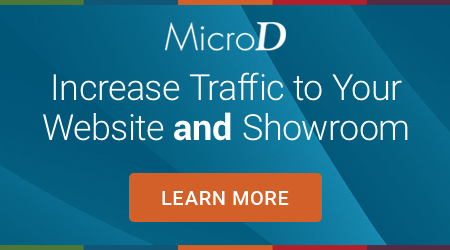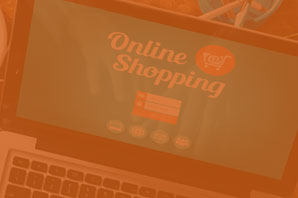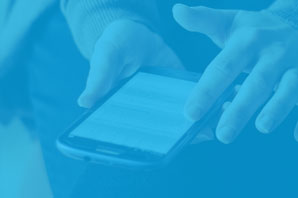81% of retail purchases now start online. This doesn’t mean that they don’t still enter a showroom to buy a sofa. But it does mean that you have to reach that customer in a meaningful way long before they receive personalized attention from a sales associate at the door. If you don’t, that showroom traffic will continue to decline. In order to make this connection, you need to have a clear picture of who this customer is before you’ve even met them. That’s what a buyer persona is for retail. Learning the answer to the questions, “What is a buyer persona and how can I use it to help my business?“, is a first and very important step reaching more customers. It will help you increase revenues and strengthen your brand so that it’s not only thriving today but into the next generation.
Let’s take a look at this useful tool.
What is a Buyer Persona?
A buyer persona is a fictional representation of your ideal customer. You might be saying, “I’d never turn down a customer for any reason. That’s not how we do business.”
While this is true, it’s important to know who your ideal customers are because they are most likely to:
- Buy the kind of furniture you offer
- Buy now or buy from you anytime
- Spend more
- Tell a friend
All of this makes them less costly to acquire. If people really want to buy, that’s always less work for your sales team, right?
A buyer persona is a tool that your marketing team and showroom sales force can use to build trust, make the sale and generate a lifelong customer. As a company, you may have 2 or more buyer distinct personas. Start small so you can really speak to one or two personas before branching out.
Whether you’re creating an ad, writing content or working directly with the customer, you have a better understanding of who the customer is, how you can relate them and what motivates their decisions.
Need help building a buyer persona? Start working with our marketing team today.
Why You Need Buyer Personas
A basic principle of marketing that’s been around since before the “Mad Men era” says something like “Try to appeal to everyone; you appeal to no one”. Casting your nets (ads) broadly makes it hard to reach customers you actually want to reach. Those are the ones who buy now and spend more with less work from you.
Marketers have always known that the more narrowly they target, the better their ads perform. But before the Internet and digital marketing hit the scene, targeting narrowly just wasn’t possible. You can’t have someone open a magazine and see a different ad based on their profile. But you can do this online with surprising low cost and low effort.
Learning what a buyer persona is will help you target better customers more often. The buyer persona helps you hone in on what your target customer really wants so that you can send the right message at the right time to the right person. When you do this, several amazing things happen for your business.
What Is a Buyer Persona Doing for Your Business?
If you have one, it’s doing the following.
- Acquisition costs go down – Your strategy is more targeted and efficient. You’re able to spend where you get the highest ROI and cut wasteful spending faster.
- You can tailor content around customer goals – Rather than focusing on what you’re trying to sell, you make marketing customer-centric. Customers today are tired of pushy salespeople. In fact, 84% of millennials say they don’t trust traditional advertising messages. They trust people who educate them so that they can make smart buying decisions.
- Customers feel valued – This isn’t to say that your customers don’t feel valued now. But when you have a persona, customers think, “Hey, this company understands me.”
- Customers feel connected – Does loyalty still exist in retail? It does when you can connect with customers on a more meaningful level.
All of this translates to increased revenues and a stronger brand affinity. We’re not just saying this. The proof is in the numbers. A major Adobe study found that targeted ads, which can only truly be achieved through personas, are 2X as effective as broader advertising.
Today, like never before in history, we have the data to really understand what customers want and deliver that to make the sale. No more guessing or spending a million on an ad campaign that falls flat.
You can know exactly what motivates your ideal customer. But how do we figure this out? It all starts with research.
How to Build a Buyer Persona
What the best buyer persona is based on is your real customer data. You can acquire this through:
- The website, social media, and ad analytics
- Customer surveys or interviews
- Hiring a 3rd party phone interview company
Incentivize people to take surveys, if needed. If you’re making cold calls in the community, be sure they know up front, you’re not selling anything. You value their opinion and want to deliver the best experience to people like them.
Talk to your sales team. See what they hear from customers. Who do they say are the best customers?
Scour reviews to look for commonalities.
Asking one-off questions can help you build a buyer persona initially. But it’s important to put systems in place to gather, aggregate and analyze data to determine not just what people say, but what they do. A customer may say they want to see brighter colors in your patio collections. But do people actually buy them? Maybe. Maybe not.
The best part about what a buyer persona is in your store will be different than other stores around you. Because it’s about the customers that fit your brand the best. And helps you stand out to these target customers. Now, Let’s look at an abbreviated example.
Example of a Buyer Persona
Name: Stay-at-home-mom, Sarah { pro tip: add a picture to the profile to make this persona feel like a real person }
About: 40 years old, married to Jim with two children under 7 and a mid-sized dog. They live in a 3-bedroom home with a mortgage
Education: Bachelor’s degree from the state university
What’s her typical day like? She stays busy juggling school, activities, husband, friends, and finances. Jim works long hours and her kids are in school, so she spends a lot of time managing the household alone.
Challenges/Pain points/Goals: Staying home puts a strain on the finances, but raising healthy, happy, intelligent children is important to her. She spends a lot of time at home, so she wants to have a nice space that’s comfortable but also looks good when guests come to visit. They have moderate levels of debt, so she’s hesitant to take on more. When she buys furniture, she needs to know it can stand up to young children and last for years. But she can’t afford top of the line.
Where does she get information? She spends significant time on Facebook and Instagram on both her laptop and mobile phone. She reads company and product reviews before making a buying decision. Sarah also values the opinions of friends and family in regard to buying decisions. If someone she knows recommends a company on Facebook, she’s going to check them out.
Note that this buyer persona is enough to connect to a Sarah-type person. But it’s general enough that this could be a large number of customers.
When Should You Update Your Buyer Personas
You heard it here, “If it ain’t broke, don’t fix it.”
Are you very happy with your profits? Is your company growing? Can you pass this company down to your children in a better state than when it was passed down to you? Do your employees feel very stable and happy in their employment? It sounds like you’re doing alright. What is a buyer persona to you?
But this isn’t where most retail furniture stores are today. They’re finding themselves in a quickly changing world. They need to adapt to new customer expectations.
Update your personas if:
- You don’t have them written down. Everything works better when everyone’s on the same page
- Your customer acquisition costs are too high
- Your sales cycle is long
- You’re not getting lots of good reviews. If you’re attracting the right customers, usually they’ll be very happy and want to share online.
- People buy then don’t come back
- People are coming into the store to test furniture, but then don’t buy from you. Big red flag!
- People are clicking ads but not buying. That’ll cost you!
- Your revenues and profits are slipping year after year
What is a buyer persona? It’s your lifeline to turn this ship around. But it’s not just the persona. It’s how you use it. Let’s explore how you’ll take a persona to create some targeted campaigns.
How to Use Buyer Personas in Email Marketing
What is a buyer persona when it comes to email? It’s a tool that allows you to send emails that:
- Have a high open rate
- Have high click-through
- Help you achieve that email’s goal (brand awareness, making a sale, getting them to write a review, increasing customer value, etc.)
- Reduce unsubscribes. If people feel an email isn’t relevant, they unsubscribe.
Email Marketing Guide
- Set your goal – Get very clear on what you want to achieve with this email campaign.
- Segment your email list by buyer persona – This is an automated process, using the right software.
- Modify the email for each persona – You have one email with one goal. But with your buyer persona in hand, make small changes to be more relevant to each persona. Don’t forget the subject line, image and first several lines of the email.
- Send the right offer – e.g., 180 days, no interest, buy one get one, 25% off on patio. Consider which offer will best appeal to this persona.
- Add a clear call-to-action.
- Create a landing page. A CTA should never go to the home page or a general category. It should go to a landing page that shows the visitor how to redeem the offer and helps them do so. You may create multiple landing pages for multiple personas.
- Do A/B testing on a small group. If you have a large list, send a targeted email to a sub-section to see which subject works best. Then send it out to everyone.
- Review your analytics. Continually improve your open rate, click-through rate and goal completion rate.
Also, create event-triggered emails for each persona. These include:
- Welcome emails
- Purchase confirmations
- Item out for delivery
- Abandoned cart
- Please write a review
Event triggered emails have the highest open rate of any email so use this space wisely to further the customer relationship.
How to Use Buyer Personas in Online Advertising
In much the same way, you segmented your email, you’ll create at least one ad for each persona. We’ll look at Google Ads as an example
- Create your keyword list around the persona. What is this persona looking for in Google?
- Add negative keywords. These are words that can change the meaning of your keywords in ways that they would no longer be used by your persona. For example, “Sarah” may look for “best sectionals”. But she’s not looking for the “best cheap sectionals” and probably not looking for the “best leather sectionals” with small children.
- Directly speak to the persona in the ad. It should also align with buyer intent, which can be determined by the keywords they use in search queries.
- Align your landing page with the ad and buyer intent.
- A/B test ads and landing pages to optimize.
How to Use Buyer Personas on Social Media
Facebook Ads Manager allows you to choose certain characteristics for your Facebook and Instagram ads. Based upon what we know about Sarah, we’d choose characteristics like: 
- Generation X
- Owns her home
- Elementary age children
- Bachelor’s degree
- Within a certain radius of your store, zip code, or towns.
To these basics, consider what Sarah’s interests, hobbies, etc. may be to further narrow down your persona. Then create your ad for that persona following the above steps 3-5.
When it comes to social sharing, you’ll follow similar principles. Choose platforms where you know your persona gets information. For Millennials and Gen X, Facebook is still the most important platform for retail.
Create each piece of content around one of your personas. Engage each of your personas regularly.
If you have a post that did very well, consider paying to boost that post to reach more people. When building contests, promotions, and events on social media, know which persona you plan to target. If other personas come along for the ride, the more the merrier. But at least you’ve reached who you tried to reach.
What Is a Buyer Persona for Your Business
What is a buyer persona? How does a buyer persona work? It’s all about how you get help your marketing and sales teams get really clear about who the target customers are. It helps you connect on a meaningful level in every way. Digital marketing makes this level of personalization possible. Contact us to learn more about how we can help your company build personas and build retail marketing strategies.






